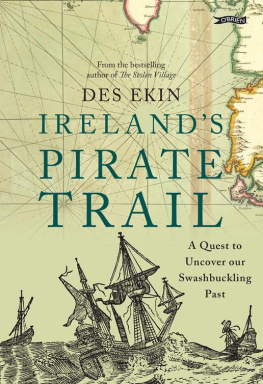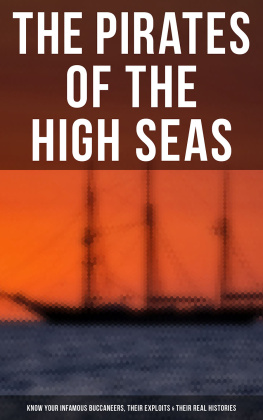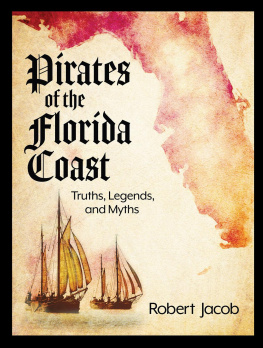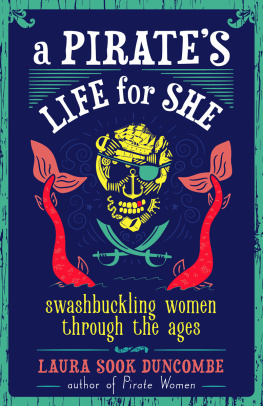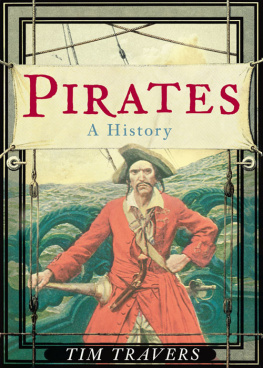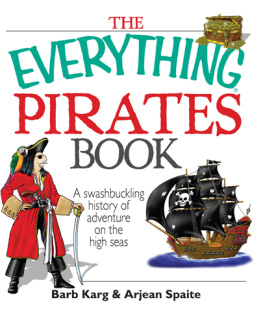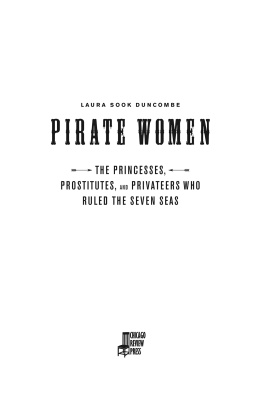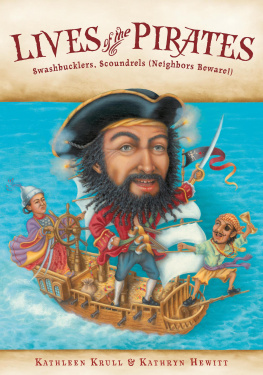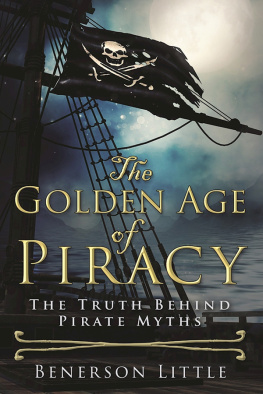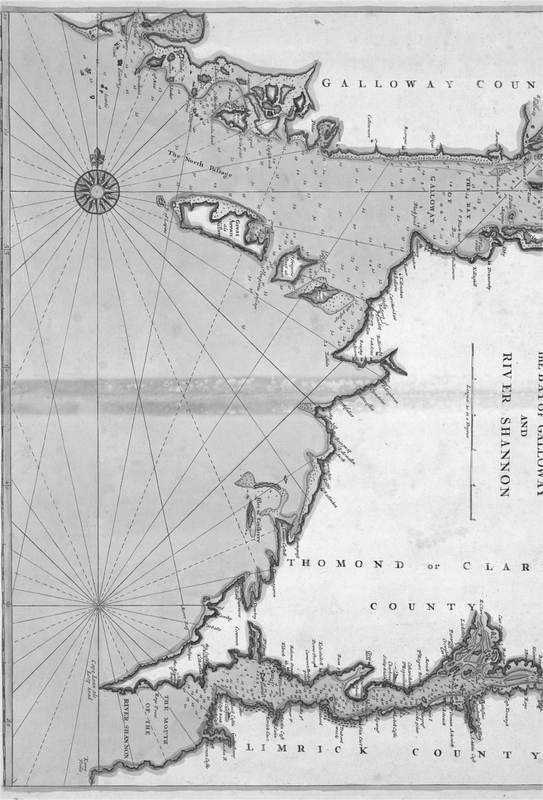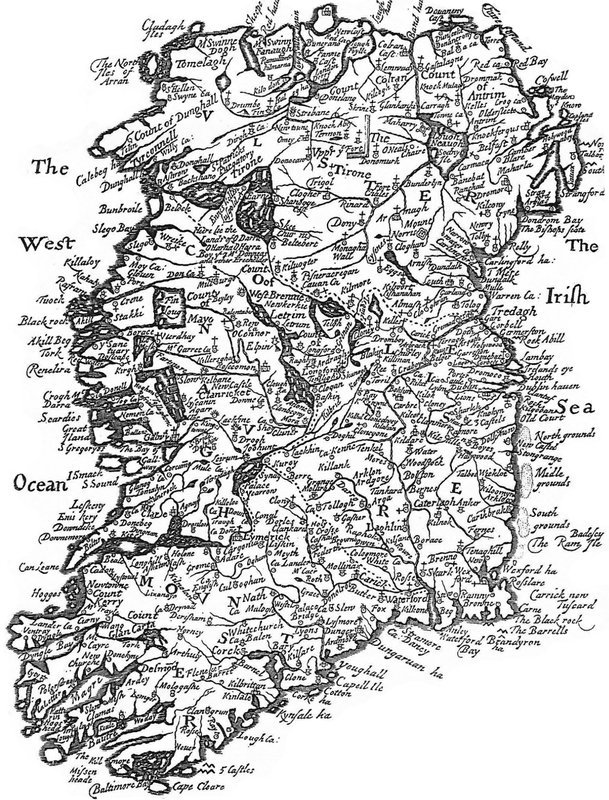In the dead of night, four pirates haul their longboat on to a deserted beach after hijacking a ship and killing almost everyone on board. On their way to shore they have left a trail of silver treasure across the seabed: their longboat was so laden down with pieces of eight that they were forced to jettison purseloads of the coins just to stay afloat. Now, watched only by the stars, they dig a deep trench in the sand and bury the remainder of their plunder.
At another beach, in a different century, a band of buccaneers steals ashore from a Caribbean ship on a midsummer evening. Witnesses say they are carrying so much stolen treasure in sacks and casks that they are bowed down under the weight. They divide up their spoil and vanish into the night.
Another harbour, another era. A pirate ship pulls in to a remote haven, its captain desperate to sell off his cargo. The local Admiralty official is duty bound to arrest them, but they offer him a bribe of a female African slave so, instead, he decides to look the other way.
Are these pirate tales from exotic Jamaica or Hispaniola? Sweat-stained Government reports from tropical Nassau or the Mosquito Coast? Or flights of fancy from modern Disney scriptwriters?
No, all these true-life episodes happened in Ireland. They are part of the little-known buccaneering history of the greatest pirate island of all.
Ever since I was a child, I have been fascinated by pirates. But Id always assumed that those colourful freebooters and privateers flourished only in torrid, overheated climates, in faraway places like Port Royal or Tortuga Bay.
When I was a youngster, eagerly devouring stories about Blackbeard and Captn Morgan, I always felt a little cheated that we didnt have any pirates in the grey, cold, misty and unromantic seas around Ireland and Britain.
It was only years later, when I began research for my book The Stolen Village, that I discovered the astonishing truth. Not only did Ireland have a plenitude of pirates, and buccaneers by the boatload but, for a period in history, Ireland was Pirate Central. It was one of the two bases in the western world where sea robbers operated with defiant impunity.
At one stage, the frustrated English authorities complained that there were two areas where pirates effectively ruled unchallenged. One was the notorious Barbary Coast of North Africa, and the other was the southwest coast of Ireland.
They complained that the latter area was effectively a pirate economy. English and Irish money was rarely seen in the district the main currencies were pieces of eight and Barbary ducats.
The more I found out about Irelands forgotten pirate heritage, the more I longed to write a book about the subject. When the newspaper where I worked as political correspondent was hit by large-scale job cutbacks, I was suddenly free to take up the challenge. Like many people who find themselves unexpectedly adrift after many years of continuous employment, I felt rootless, terrified and yet, at the same time, liberated and exhilarated. Embarking on the pirate trail seemed like a good metaphor for a scary new freedom and a new life.
I didnt want to write a conventional history of piracy. Because pirates cover such a wide range, they have little in common. Like flotsam from a scuttled prize-ship, they are scattered randomly throughout history: scattered geographically; scattered chronologically; disconnected in their motives and in their methods. The great 1600s pirate admirals who menaced the southern Irish coast with thousands of men, and who seriously challenged the English Kings authority, had little in common with the opportunistic local coastal raiders of the 1400s and 1500s. The Viking raiders who founded entire cities were on a different scale to the small-time sea-muggers who lurked outside harbours to hijack fishing smacks. And men like Americas John Paul Jones, who fought for the liberty of nations, do not sit easily beside the Barbary corsairs of Baltimore fame, who captured women and children for sale on the slave markets.
This posed a predicament. All I knew for sure was that I wanted to select some of Irelands biggest, most badass pirates, to summon their spirits up from the deep, and to bring them to life without letting clichs get in the way.
I decided to take to the road on my quest. My aim was to visit their birthplaces, their centres of operation and the scenes of their greatest triumphs and defeats. I hoped to assimilate the atmosphere, in order to better understand their lives. I drew up a plan to tour the Irish coast from north to south, from Rathlin Island and Dunfanaghy to the Wexford Saltees and Roaring Water Bay; and from east to west, from Dalkey Island near Dublin to Clare Island and Broad Haven in Mayo, seeking out the pirates stomping grounds, talking to those who knew their stories best, and trying my best to separate the myth from the reality.

